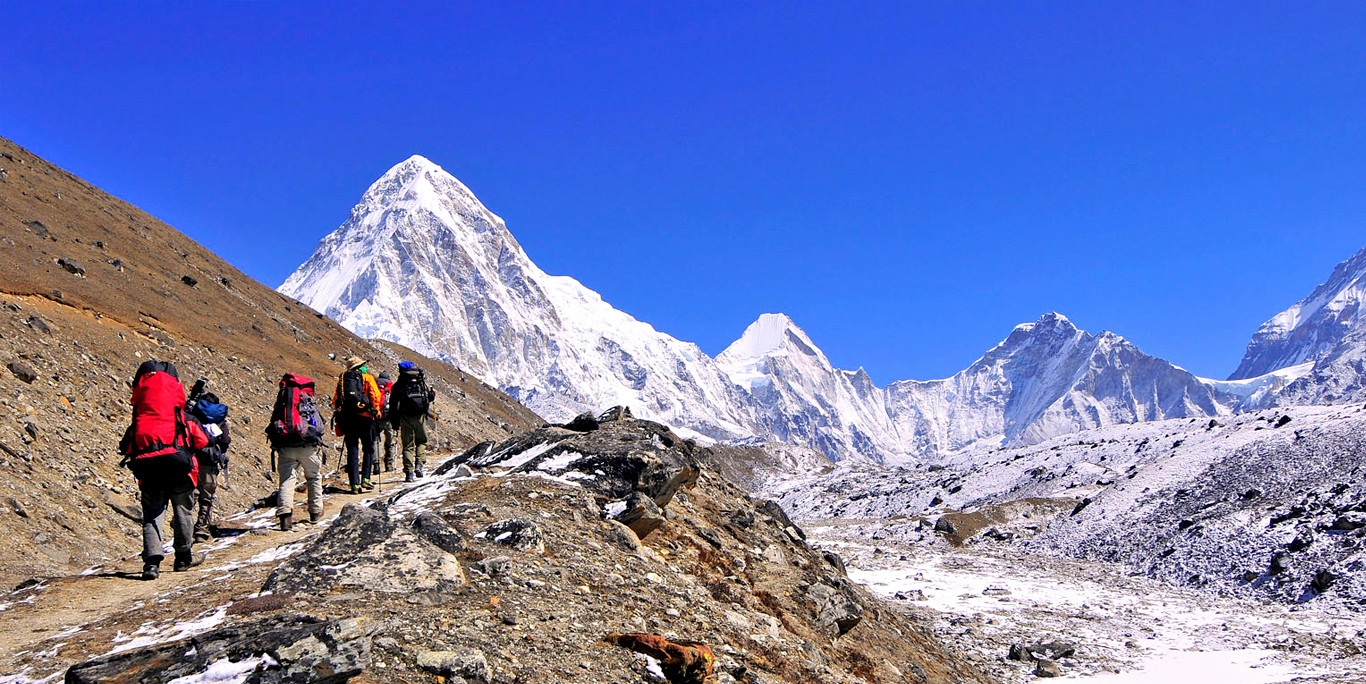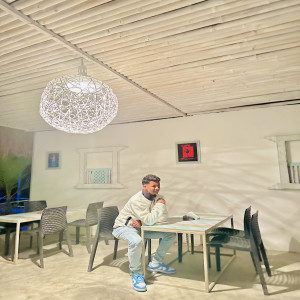Annapurna Circuit Trek
The Annapurna Circuit Trek is one of the most popular and spectacular trekking routes in Nepal, offering an incredibly diverse array of landscapes and cultural experiences. This trek circles the Annapurna massif, providing trekkers with an unforgettable journey through lowland villages, lush green forests, arid high mountain landscapes, and a variety of ethnic communities.
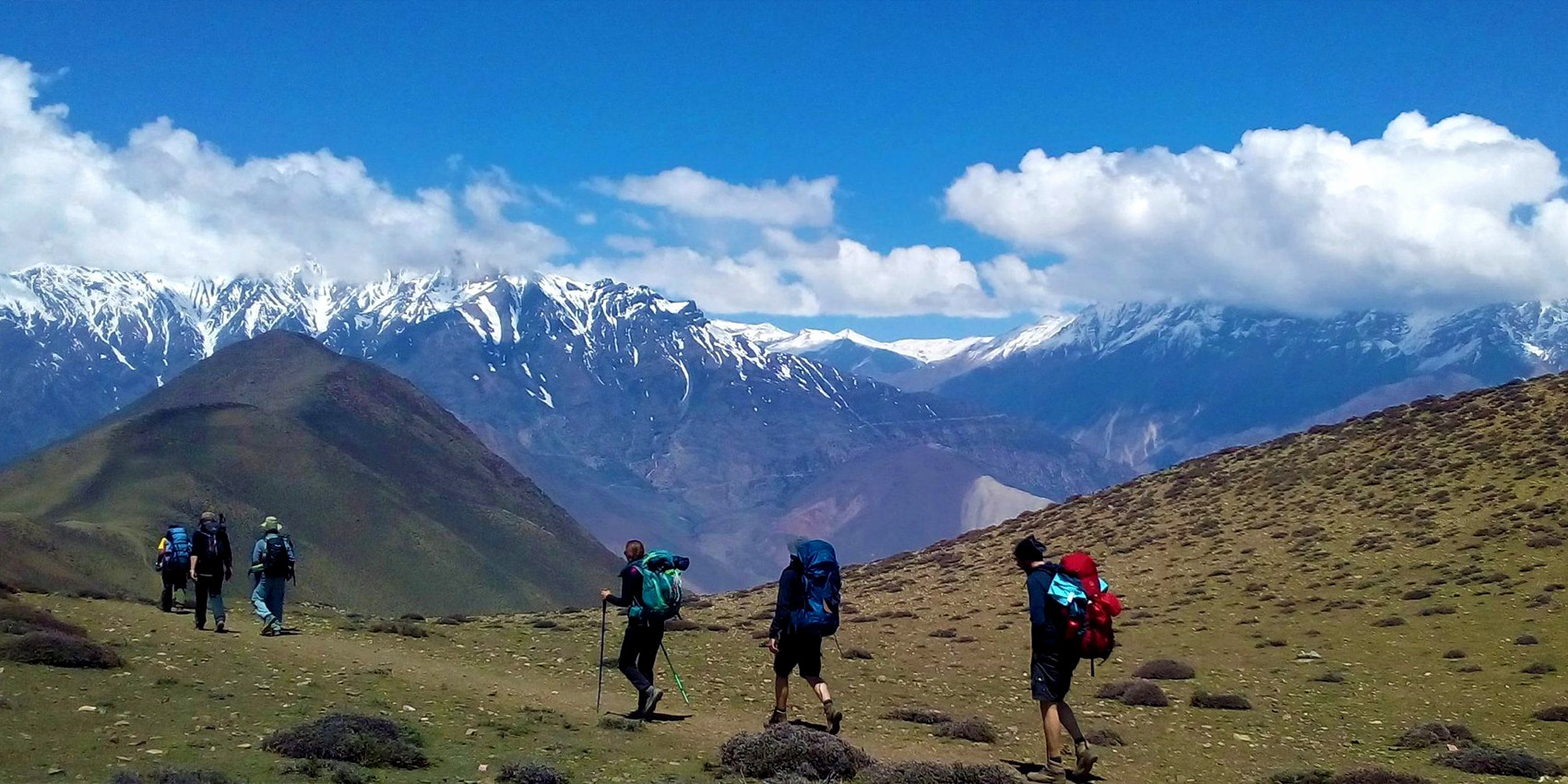
Key Features of the Annapurna Circuit Trek
-
Duration and Distance: Typically, the trek takes about 12 to 21 days to complete, covering around 160-230 kilometers, depending on the chosen route and pace of trekking.
-
Altitude: The trek reaches its highest point at Thorong La Pass, which is at an elevation of 5,416 meters (17,769 feet). This challenging pass offers panoramic views of the Annapurna range and is a highlight for many trekkers.
-
Cultural Experience: The trek passes through diverse ethnic communities, including Brahmin, Chhetri, Tibetan, and Gurung, offering trekkers a chance to witness a variety of cultural practices and traditions. Local teahouses and lodges along the way provide warm hospitality and a chance to experience the local way of life.
-
Scenery: From rice paddies and subtropical forests in the lower reaches to high-altitude tundra and barren plateaus, the trek offers stunning views of some of the highest peaks in the world, including Annapurna I, Annapurna II, Dhaulagiri, and Manaslu.
-
Wildlife: The route passes through two different conservation areas, the Annapurna Conservation Area and the Manang District, where trekkers can observe a variety of flora and fauna unique to the region.
The Annapurna Circuit Trek with us will be an adventure of a lifetime, where each turn along the trail promises new sights, sounds, and memories in the heart of the Himalayas.
Everest Base Camp Trek
The Everest Base Camp Trek is one of the most iconic and revered trekking adventures in the world. Situated in the heart of the Nepalese Himalayas, this trek offers an exhilarating and awe-inspiring journey to the base of the highest peak on Earth, Mount Everest. Known for its breathtaking landscapes, challenging trekking routes, and rich cultural experiences, the Everest Base Camp Trek attracts thousands of adventurers every year.
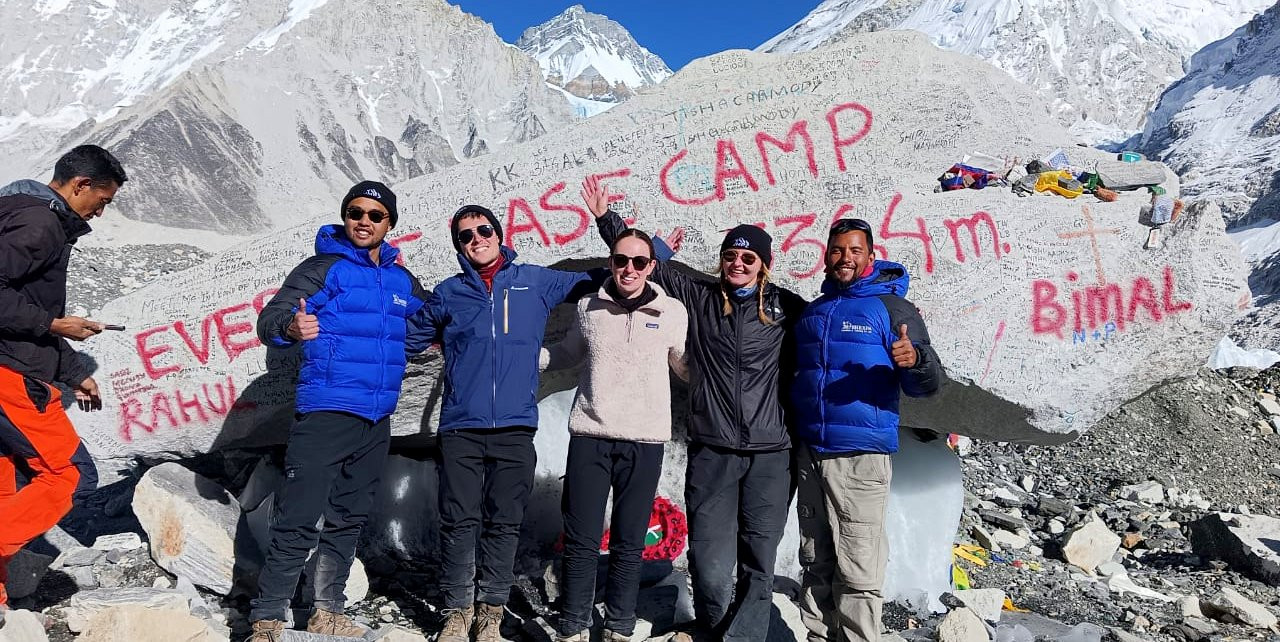
Key Features of the Everest Base Camp Trek
-
Duration and Distance: Typically, the trek takes about 12 to 14 days to complete, covering a round trip distance of approximately 130 kilometers from Lukla, the usual starting point after a short flight from Kathmandu.
-
Altitude: The trek reaches its highest point at Kala Patthar, which is at an elevation of 5,545 meters (18,192 feet), offering the best views of Everest. The base camp itself is slightly lower at 5,364 meters (17,598 feet).
-
Cultural Experience: The trek traverses through the homeland of the Sherpa people, providing trekkers with an opportunity to delve into the rich Sherpa culture and visit ancient monasteries, including the famous Tengboche Monastery.
-
Scenery: The route offers dramatic views of some of the world’s highest peaks, including Everest, Lhotse, Nuptse, and Ama Dablam. The path winds through varied landscapes, from lush valleys with fast-flowing rivers to glacial moraines and rugged mountain terrain.
-
Wildlife: The Sagarmatha National Park, through which the trek passes, is home to unique high-altitude flora and fauna, including the elusive snow leopard, Himalayan tahr, and several species of pheasants.
The Everest Base Camp Trek with Relax Getaways is more than just a trek; it’s a journey of personal discovery and fulfillment, set against the backdrop of the world’s most spectacular mountain scenery. It’s an opportunity to challenge yourself, meet like-minded adventurers, and create memories that will last a lifetime.
Langtang Valley Trek
The Langtang Valley Trek is a splendid choice for those looking to experience the magnificent Himalayan landscapes combined with rich cultural interactions, all within a relatively short distance from Kathmandu. This trek offers an excellent introduction to the mountains of Nepal, featuring ethnic villages, the lush Langtang National Park, and views of majestic peaks.
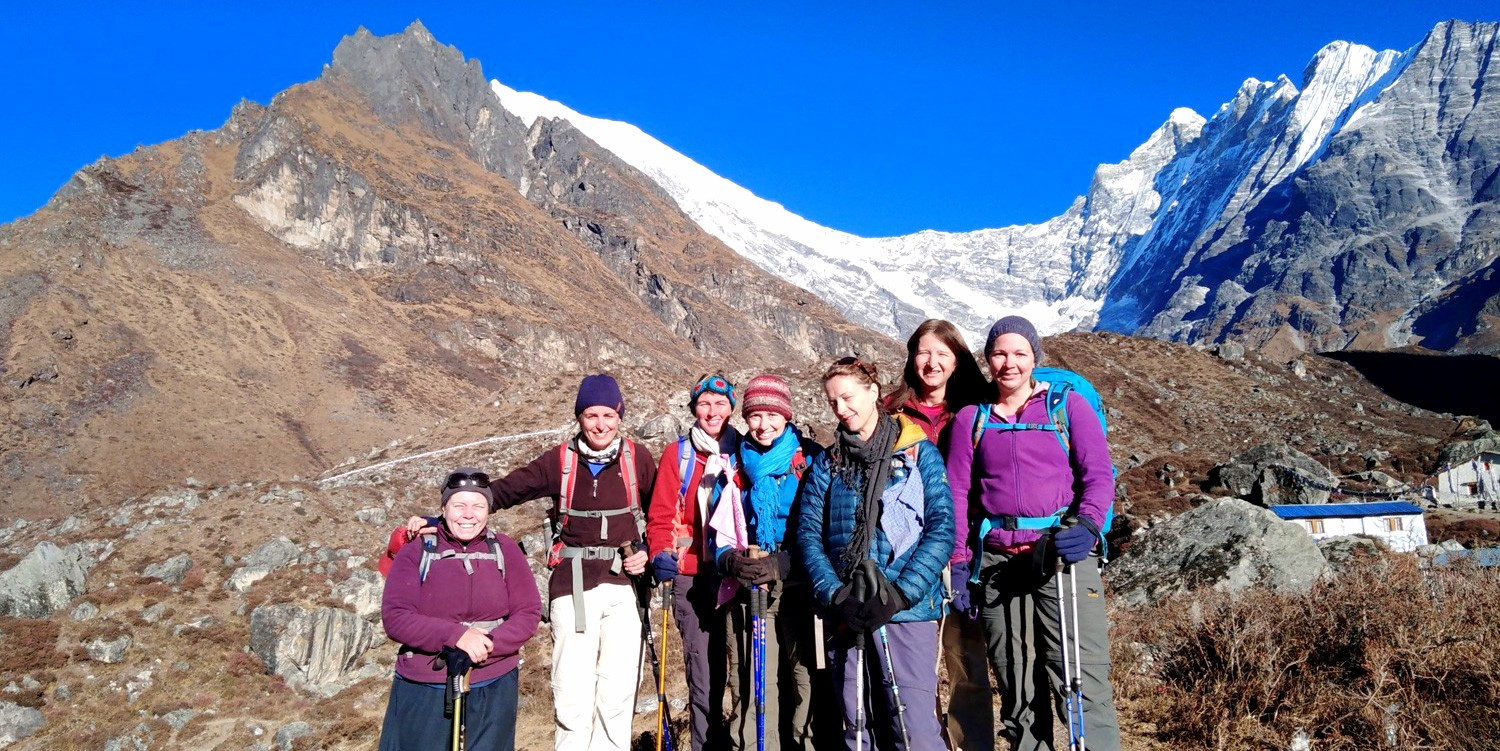
Key Features of the Langtang Valley Trek
-
Duration and Distance: The trek can be completed in about 7-12 days, covering a distance of roughly 65 kilometers (40 miles) round trip, starting and ending at Syabrubesi, which is a day’s drive from Kathmandu.
-
Altitude: The highest point of the trek is Kyanjin Gompa, which is situated at an altitude of about 3,870 meters (12,697 feet). This village is a great place for acclimatization and exploring local cheese factories and monasteries.
-
Cultural Experience: Langtang Valley is predominantly inhabited by the Tamang people, whose culture is heavily influenced by Tibetan traditions. The trek provides an opportunity to explore this unique cultural blend, especially in the villages of Langtang and Kyanjin.
-
Scenery: The trek offers varied landscapes, from lush forests and bamboo groves to wide alpine meadows. Spectacular views of Langtang Ri, Langtang Himal, Langsisa pass, and Ganjala Peak are constant throughout the journey.
-
Wildlife: The region is part of Langtang National Park, which is known for its diverse flora and fauna, including the endangered red panda and Himalayan tahr.
The Langtang Valley Trek with Relax Getaways is not just a physical journey but a voyage into the heart of Nepalese culture and nature. It’s perfect for those who want a shorter trek that still captures the majestic beauty of the Himalayas and the warmth of its people.
Manaslu Circuit Trek
The Manaslu Circuit Trek is a remarkable journey that circles the Manaslu mountain, the eighth highest peak in the world, located in the Gorkha district of Nepal. This trek is favored by many who seek a less crowded alternative to the more famous treks in Nepal, offering a remote and authentic experience through some of the most stunning landscapes in the Himalayas.

Key Features of the Manaslu Circuit Trek
-
Duration and Distance: Typically, the trek can be completed in about 14-20 days, covering approximately 177 kilometers (110 miles). It is a moderately challenging route that combines cultural richness with incredible natural beauty.
-
Altitude: The highest point on the trek is the Larkya La Pass, at an altitude of 5,106 meters (16,752 feet), which provides spectacular views of the Manaslu range, as well as nearby Himlung, Cheo, and Kang Guru peaks.
-
Cultural Experience: The trek passes through diverse ethnic villages, including Nubri and Tsum, where the influence of Tibetan culture is predominant. Trekkers get a profound sense of the ancient Buddhist and Hindu traditions that are still practiced in these regions.
-
Scenery: The landscape varies from green countryside and lush forests to spectacular high-altitude landscapes featuring dramatic mountain vistas. The trek also offers views of glaciers, moraines, and rivers.
-
Wildlife: The region is rich in biodiversity and is part of the Manaslu Conservation Area. Trekkers might spot rare faunal species like the snow leopard, Himalayan Tahr, and various birds.
The Manaslu Circuit Trek with Relax Getaways to experience the awe-inspiring beauty and serene spirituality of one of Nepal's most cherished trekking destinations. This journey will not only challenge you physically but also enrich you with its deep cultural immersion and breathtaking natural splendor.
Ghorepani Poon Hill Trek
The Ghorepani Poon Hill Trek is one of the most popular and accessible treks in the Annapurna region of Nepal, offering a relatively easy walk that provides a great introduction to the beauty of the Himalayas. Renowned for its stunning sunrise views over the Himalayas from Poon Hill and its vibrant rhododendron forests, this trek is particularly suitable for those who are looking for a shorter hiking trip that does not compromise on authentic Himalayan experience.
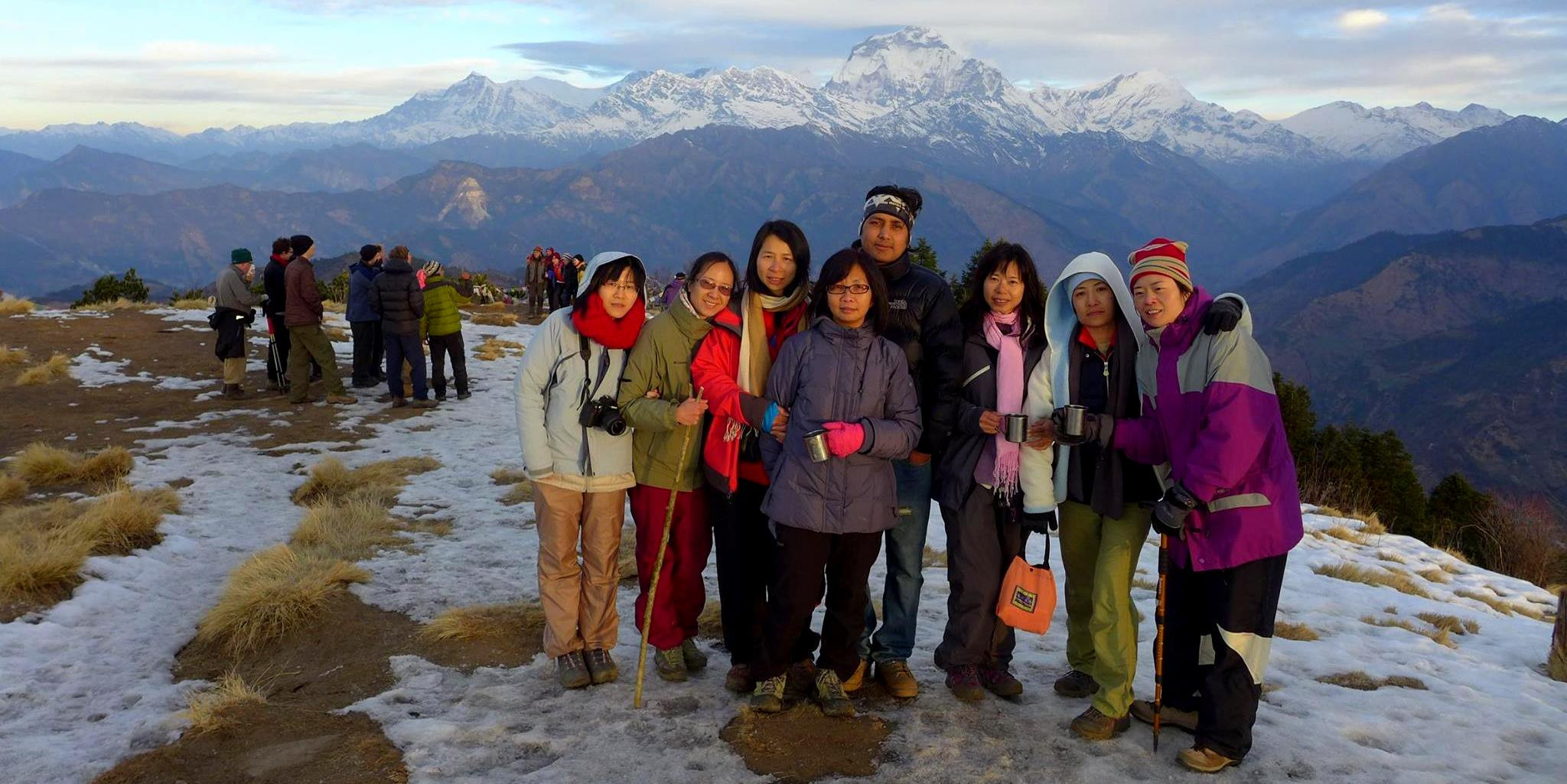
Key Features of the Ghorepani Poon Hill Trek
-
Duration and Distance: The trek usually takes about 4-7 days to complete, covering a moderate distance that makes it ideal for families, beginners, or those with limited time. The trek starts and ends in Pokhara, which is a scenic lakeside city and a hub for trekkers.
-
Altitude: Poon Hill, the highlight of the trek, stands at an altitude of 3,210 meters (10,532 feet), which offers spectacular panoramic views of the Annapurna and Dhaulagiri mountain ranges, including close-ups of Annapurna South, Machhapuchhre, and Hiunchuli.
-
Cultural Experience: The trek passes through the charming villages of Ulleri, Ghorepani, and Ghandruk, providing insights into the rural lifestyle and cultures of the Gurung and Magar communities.
-
Scenery: The path winds through beautiful rhododendron forests, especially stunning during the spring when the flowers are in full bloom, and offers sweeping vistas of the high mountains.
-
Wildlife: The trek traverses through parts of the Annapurna Conservation Area, home to diverse flora and fauna, including a variety of bird species, making it a treat for nature enthusiasts.
The Ghorepani Poon Hill Trek with Relax Getaways offers a delightful blend of natural beauty, easy trekking, and cultural immersion, making it a perfect option for those who want to experience the Himalayas in a more relaxed and leisurely manner. Join us for a memorable journey through one of Nepal’s most picturesque and welcoming regions.
Tips for The Best Group Treks in Nepal
Group treks in Nepal offer a unique opportunity to explore some of the world's most stunning landscapes while bonding with fellow trekkers. To ensure a successful and enjoyable experience, here are some essential tips to consider when planning and undertaking a group trek in Nepal:
Choose the Right Trek for the Group
-
Assess Fitness Levels: Ensure that all members of the group are physically capable of completing the chosen trek. Consider the difficulty, duration, and altitude of the trek.
-
Match Interests: Choose a trek that aligns with the interests of the group, whether it's cultural immersion, wildlife viewing, or challenging climbs.
Plan and Book in Advance
-
Secure Permits and Accommodations: Some treks require permits and TIMS cards which should be arranged well in advance to avoid any last-minute issues. Booking teahouses or lodges ahead of time is also crucial during peak seasons.
-
Hire a Reputable Guide: A knowledgeable local guide not only enhances safety but also enriches the trekking experience by sharing insights about the local culture, flora, and fauna.
Pack Appropriately
-
Essential Gear: Each trekker should have a sturdy pair of hiking boots, a warm sleeping bag, and appropriate clothing for varying temperatures. Don’t forget a first-aid kit, sunscreen, and sunglasses.
-
Shared Equipment: Distribute shared equipment like water purifiers, maps, and tents evenly among the group.
Focus on Acclimatization
-
Prevent Altitude Sickness: Follow a planned itinerary that allows for proper acclimatization, especially on higher altitude treks like Everest Base Camp or the Annapurna Circuit.
-
Stay Hydrated: Encourage everyone to drink plenty of water to stay hydrated and help prevent altitude sickness.
Maintain Flexibility
-
Manage Pace and Breaks: Keep a pace that suits the slowest member to ensure the group stays together. Regular breaks help manage fatigue and maintain morale.
-
Be Prepared for Changes: Weather and health issues can affect the trek’s progress. Be prepared to adjust the itinerary as needed.
Respect Local Customs and Environment
-
Cultural Sensitivity: Educate the group on local customs and norms to ensure respectful interactions with local communities.
-
Leave No Trace: Practice eco-friendly trekking by carrying out all waste and minimizing environmental impact.
Ensure Safety and Communication
-
Emergency Protocols: Establish clear communication plans and emergency protocols. Carry a satellite phone or a GPS device in remote areas where mobile coverage is unreliable.
-
Travel Insurance: Ensure that all group members have travel insurance that covers high altitude trekking and medical evacuation.
Build Team Spirit
-
Pre-Trek Meetings: Hold meetings before the trek to discuss details and build excitement. This is also an opportunity to address any concerns and ensure everyone is prepared.
-
Group Activities: Engage in group activities during the trek to foster a sense of camaraderie and teamwork.
By following these tips, groups can maximize their enjoyment and safety during a trek in Nepal. Each trekking experience in Nepal offers a unique adventure that brings together natural beauty, challenging trails, and cultural richness, making it a memorable journey for all participants.
Ideal Time for The Best Group Treks in Nepal
Choosing the ideal time for trekking in Nepal is crucial for ensuring a pleasant and safe experience, especially when planning group treks. The best times to trek largely depend on the region and the specific trekking route, but generally, the most favorable conditions are found during the pre-monsoon spring and post-monsoon autumn seasons.
Spring (March to May)
-
Weather: During spring, the weather is generally stable with moderate temperatures. This is an excellent time for trekking as the days are warm, which provides comfortable trekking conditions.
-
Visibility and Scenery: Spring is also the time when the trails and the mountains are vibrant and lively. The rhododendrons, Nepal’s national flower, bloom spectacularly in the lower altitudes, especially in the Annapurna region, creating picturesque trails.
-
Considerations: This season attracts a high number of trekkers, so popular routes like the Everest Base Camp and Annapurna Circuit can be quite crowded. Booking in advance is advisable to secure the best accommodations and services.
Autumn (September to November)
-
Weather: Autumn is considered the best overall season for trekking in Nepal. The post-monsoon climate brings clear skies, reduced rainfall, and excellent visibility.
-
Visibility and Scenery: The air is fresh and clear, which is perfect for mountain viewing. The views of the Himalayan peaks are exceptionally clear, making this season a favorite for photographers and nature enthusiasts.
-
Considerations: Like spring, autumn is a peak trekking season, so popular trails will be busy, and teahouses tend to fill up quickly. Early booking and preparation are essential to ensure a smooth trekking experience.
Winter (December to February)
-
Weather: Winter brings colder temperatures, especially at higher altitudes, which can be challenging for some trekkers. However, the weather tends to be stable, and the skies are still clear.
-
Visibility and Scenery: Snowfall may be common in higher regions, adding to the scenic beauty but also to the difficulty of trekking. Some high passes, like Thorong La in the Annapurna Circuit, may be closed due to heavy snow.
-
Considerations: Fewer trekkers during winter mean quieter trails and more interaction with locals, but be prepared for potentially harsh conditions and ensure that you have the right gear for cold weather.
Monsoon (June to August)
-
Weather: The monsoon season is marked by heavy rains, which can make trekking paths slippery and muddy, with frequent leeches and bugs. Landslides and floods are also risks in certain areas.
-
Visibility and Scenery: The rains bring lush greenery to the landscapes, and the forests are dense and vibrant. However, clouds and fog often obscure mountain views.
-
Considerations: Trekking in the rain shadow areas like Upper Mustang or parts of the Annapurna Circuit may still be feasible, as these areas receive significantly less rainfall.
For group treks, choosing either spring or autumn is typically the best bet, offering favorable weather conditions, excellent visibility, and the dynamic beauty of nature, whether it’s in bloom during spring or in the crisp clarity of autumn. Planning your trek during these times ensures that all group members have the most enjoyable and fulfilling experience.
From the towering peaks of Everest Base Camp to the cultural depths of the Annapurna Circuit and beyond, Nepal's trekking paths offer unique experiences. These outings are best experienced in the clear, settled spring and fall conditions. Preparing properly with the required gear and permits and aligning the trip with the abilities and interests of the group sets ensures a successful and pleasant trip for group excursions. Whether looking for a challenge or cultural immersion, trekking in Nepal links hikers with the magnificent terrain and vibrant traditions of this lovely nation in a life-changing trip.
FAQs for The Best Group Treks in Nepal
Q: What is the best time to go trekking in Nepal?
A: The optimal times for trekking in Nepal are during the autumn (September to November) and spring (March to May). These seasons feature the clearest skies, most stable weather, and best visibility.
Q: Do I need a guide for trekking in Nepal?
A: While a guide is highly recommended for popular treks like Everest Base Camp and Annapurna Circuit, it's not mandatory except in restricted areas like the Manaslu Circuit where a guide and a trekking permit are legally required.
Q: Can I trek solo in Nepal?
A: Solo trekking is possible in many regions, but trekking with a group or guide is generally safer and more enjoyable. Some areas require a guide due to safety and legal regulations.
Q: What are the accommodation options on the treks?
A: Accommodations range from basic teahouses with communal bathrooms to more comfortable lodges with private facilities. It's advisable to book ahead during peak seasons.
Q: How much does it cost to trek in Nepal?
A: Costs vary by trek, duration, and comfort level. Budget trekkers might spend $20-$30 per day, while those seeking more comfort could spend $100-$150 per day, including guides, porters, food, and lodging.
For the Nepal tour, please click here.
If you are looking for different kinds of Nepal Tours or Trekking Packages, feel free to contact us.
